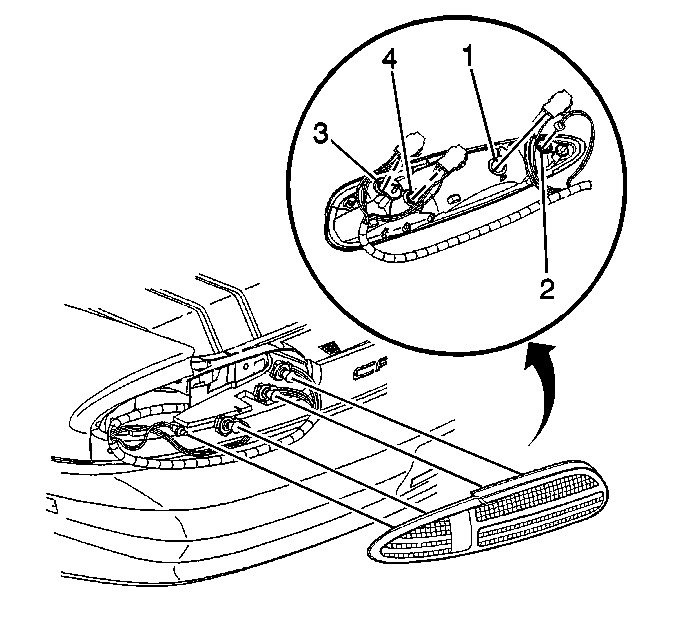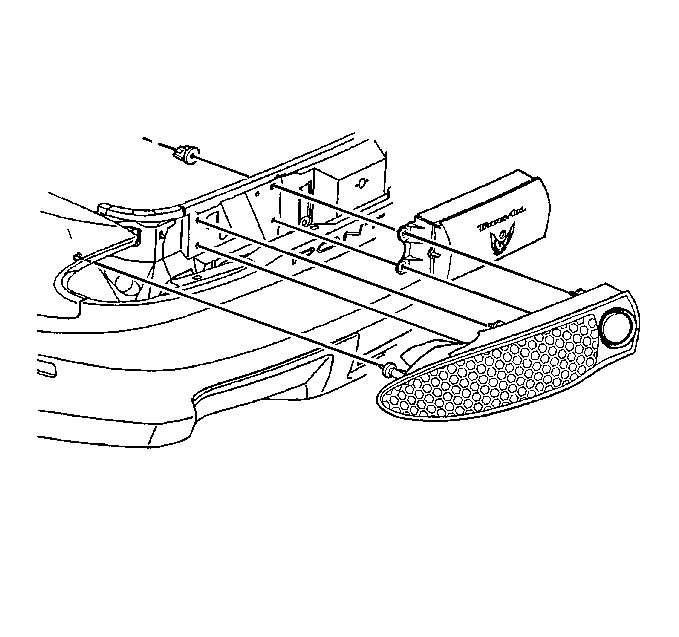Tail Lamp Replacement Chevrolet
Removal Procedure
- Reposition the rear compartment trim to access the tail lamp nuts.
- Remove the tail lamp nuts.
- Pull the tail lamp outward from the rear end finishing panel.
- Remove the following wiring harness sockets from the tail lamp:


| • | The tail lamp/stop lamp socket (1) |
| • | The tail lamp socket (2) |
| • | The back-up lamp socket (3) |
| • | The turn signal socket (4) |
Installation Procedure
- Install the following wiring harness sockets to the tail lamp.
- Install the tail lamp to the rear end finishing panel.
- Install the tail lamp nuts.
- Reinstall the rear compartment trim.

| • | The turn signal socket (4) |
| • | The back-up lamp socket (3) |
| • | The tail lamp socket (2) |
| • | The tail lamp/stop lamp socket (1) |

Notice: Use the correct fastener in the correct location. Replacement fasteners must be the correct part number for that application. Fasteners requiring replacement or fasteners requiring the use of thread locking compound or sealant are identified in the service procedure. Do not use paints, lubricants, or corrosion inhibitors on fasteners or fastener joint surfaces unless specified. These coatings affect fastener torque and joint clamping force and may damage the fastener. Use the correct tightening sequence and specifications when installing fasteners in order to avoid damage to parts and systems.
Tighten
Tighten the tail lamp nuts to 3 N·m (27 lb in).
Tail Lamp Replacement Pontiac
Removal Procedure
- Reposition the rear compartment trim to access the taillamp nuts.
- Remove the tail lamp nuts.
- Remove the tail lamp from the rear end panel.
- Remove the tail lamp filler, if needed.
- Remove both tail lamps in order to replace the taillamp filler.
- Remove the following wiring harness sockets from the tail lamp:


| • | The tail lamp socket (1) |
| • | The tail lamp/stop lamp/turn signal sockets (3, 4) |
| • | The back-up lamp socket (2) |
Installation Procedure
- Install the following wiring harness sockets to the tail lamp.
- Install the tail lamp filler, if needed.
- Install the tail lamp to the rear end panel.
- Install the tail lamp nuts.
- Reinstall the rear compartment trim.

| • | The back-up lamp socket (2) |
| • | The tail lamp/stop lamp/turn signal sockets (3, 4) |
| • | The tail lamp socket (1) |

Notice: Use the correct fastener in the correct location. Replacement fasteners must be the correct part number for that application. Fasteners requiring replacement or fasteners requiring the use of thread locking compound or sealant are identified in the service procedure. Do not use paints, lubricants, or corrosion inhibitors on fasteners or fastener joint surfaces unless specified. These coatings affect fastener torque and joint clamping force and may damage the fastener. Use the correct tightening sequence and specifications when installing fasteners in order to avoid damage to parts and systems.
Tighten
Tighten the tail lamp nuts to 3 N·m (27 lb in).
